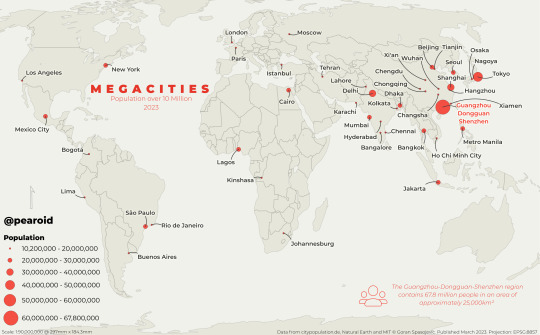#megacities
Text




Steinar Lund, Morris Scott Dollens, Ray Feibush, and Robert McCall.
#art#scifi#cyberpunk#digital art#aesthetic#science fiction#sci fi#scifiart#futuristic#scifi art#retro scifi#scifi aesthetic#scififantasy#sci fi and fantasy#60s sci fi#70s sci fi art#80s sci fi#retrofuturism#retrofuture#retro futuristic#space exploration#outer space#megacities#mega cities#megacity#old school#spaceship#space aesthetic#space art#spacecore
611 notes
·
View notes
Text









By Inward
#nestedneons#cyberpunk#cyberpunk inspirations#cyberpunk art#cyberpunk artist#megacity#megacities#futuristic#futuristic city#solarpunk#cyberpunk aesthetic
2K notes
·
View notes
Text
Brückenzirkus
Wüstenstaub
unter der Autobahnbrücke
auf Schlafsackbewohnern
Müllbarrikaden
der Megametropole
rund um die Stadtnomaden
Nebenbei drei Hyänen
angekettet
Maulkorb apathisch
Die wuchtigen Kiefer
atrophieren
zum Getrommel
des Kleingeldschamanen
Reiche von Übersee
streicheln die riesigen
Aasfresser zücken
stolz die Geldbeutel zahlen
für den Fotobeweis ihres Mutes
2 notes
·
View notes
Text
Analyzing ecological threats, resilience and Peace. Ecological threat report 2023.

The relationship between peacefulness, food insecurity, water scarcity and population growth is complex. If multiple ecological threats occur simultaneously, they can converge and mutually reinforce, causing a multiplier effect. For example, a country may be exposed to water stress and dedicate resources to addressing this threat. However, the combination of water stress and a rapidly growing population may exacerbate food insecurity, causing other effects, such as higher inflation, unplanned migration or increases in crime. Multiple stressors are also more likely to lead to negative societal outcomes such as political instability, social unrest and violent conflict. In turn, this may cause more damage to physical infrastructure and further deplete already scarce resources, thus creating further food insecurity and water stress. The interplay between ecological threats and socio-economic dynamics may lead a country into a vicious cycle of progressively greater adversity.
Ecological Threats Report 2023. Institute for Economics & Peace
#armed conflicts#natural resources#ecology#ecological threats#peacefulness#food insecurity#water scarcity#Ecological threat report#socio-economic dynamics#scarce resources#Vegatation#megacities#Institute for Economics & Peace#ecosystems environment
0 notes
Photo

The future of the planet may lie with a ... https://www.xtremeservers.com/blog/claim-a-key-for-the-slave-zero-and-read-our-interview-with-artist-francine-bridge-and-writer-miles-luna/?feed_id=124581&_unique_id=65d7e1441a0f0&Claim%20a%20Key%20for%20the%20Slave%20Zero%20and%20Read%20Our%20Interview%20with%20Artist%20Francine%20Bridge%20and%20Writer%20Miles%20Luna
#Featured#PC#Reviews#biology#explore#Fusion#Future#mechs#megacities#pc#planet#roam#technology#themes
0 notes
Text
Smoke. Humo.
Word of the week. Palabra de la semana.

Source / Fuente: How To Stay Safe Amid Wildfire Smoke
New York topped the list of most polluted major cities in the world on Tuesday night, as smoke from the wildfires in Canada continues to blanket the East Coast of the United States.
Image source / Fuente de la imagen: David Dee Delgado/Getty Images
#smoke#humo#wildfire smoke#wildfire season#incendio forestal#cities#megacities#ciudades#megaciudad#skyline#sky
1 note
·
View note
Text
Megacities: The Challenges and Opportunities of Urban Growth
A megacity is a metropolitan area with a population of more than 10 million people. Megacities are home to a significant portion of the world’s population, and they are growing rapidly. In fact, it is estimated that by 2050, there will be 33 megacities in the world.
The Rise of Megacities
Megacities are urban areas with a population of over 10 million people. They are home to a significant…

View On WordPress
0 notes
Text






The Fifth Element (1997)
#the fifth element#90s#cult classic#retro futuristic#cyberpunk aesthetic#retrofuture#new york#retro futurism#new york city#cat#food truck#aesthetic#white cat#90s movies#chinese food#megacity#90s aesthetic#cyberpunk
1K notes
·
View notes
Text
Annibale Siconolfi
@annibale_sic
Teleport Services _ Prototype Test
#art#scifi#cyberpunk#aesthetic#sci fi#science fiction#digital art#scifiart#futuristic#scifi art#science#sci fi and fantasy#science fantasy#science fiction art#sciencefiction#scifi aesthetic#scififantasy#video#scifi video#scifiedit#spaceport#space shuttle#spaceship#space art#dystopian#megacities#megacity#cyberpunk aesthetic#cyberpunk art#cyberpunk artist
602 notes
·
View notes
Text










By Lazaro
#nestedneons#cyberpunk#cyberpunk art#cyberpunk aesthetic#megacity#megacities#futuristic#futuristic city
1K notes
·
View notes
Photo

By 2050, 70% of the world’s population will live in cities, up from 54% in 2020, according to a new report by the Institute for Economics & Peace. This increase is being driven by both population growth and a continued shift towards urbanization.
by @StatistaCharts
152 notes
·
View notes
Text
like zoinks scoob i just found out about megacities

0 notes
Text
The anticipated growth of cities creates unprecedented sustainability challenges.

The global urban population is expected to grow by 63 percent between 2014 and 2050 – compared to an overall global population growth of 32 percent during the same period. Megacities with over 20 million inhabitants will see the fastest increase in population – and at least 13 new megacities are expected by 2030, in addition to the 28 existing today. The fastest growing urban centres contain around a million inhabitants, and are located in the lower-middle-income countries in Asia and Africa.
The anticipated growth of cities creates unprecedented sustainability challenges. Increasing demands for energy, water, sanitation, education, healthcare, housing, transport and public service are testing the limits of city infrastructures. In 2015, 828 million people lived in temporary housing that lack basic services like sanitation and access to drinking water. Six million new people move to such housing every year, thus ever increasing the demand for services. Cities are responsible for 67 percent of the global energy demand and consume 40 percent of world’s energy overall. Urban centres are responsible for 70 percent of global greenhouse gas emissions, contributing to climate change. In addition, urban centers increasingly experience natural disasters. They can also witness social tension brought on by rising inequality and unemployment, air and water pollution, traffic congestion, and urban violence and crime.
At the same time, urban centres offer tremendous opportunities for economic development. Eighty percent of the world’s gross domestic product is generated in cities. Urban citizens earn on average three times the income of their rural counterparts. Cities have a concentration of universities and are critical venues of research and innovation, political activism and cultural exchange. People living in larger cities tend also to have a smaller energy footprint, require less road and communication infrastructure, consume fewer resources, and have higher productivity levels. For example, according to earlier research, a city of eight million has 15 percent more productivity, e.g. wages and patents produced per capita, and 15 percent fewer infrastructure needs, e.g. gas stations, electric wires and roads, than do will two cities of four million each.
Smart Cities have emerged as one response to the challenges and opportunities created by rapid urbanization. The report “Smart Sustainable Cities – Reconnaissance Study” presents the results of a study, conducted by UNU-EGOV and funded by IDRC, that examined the thesis that Smart Cities advance sustainable development. The study analysed 876 scientific publications, recommendations from 51 think tank organizations and 119 concrete Smart City initiatives. Researchers also conducted several interviews with city managers, planners and researchers responsible for successful Smart City initiatives.
1 note
·
View note
Text
Smog. Esmog.
Word of the week. Palabra de la semana.

Source / Fuente: How Visiting a Polluted City Is Bad for Your Health + Pollution filled skies above Shanghai, China.
0 notes
